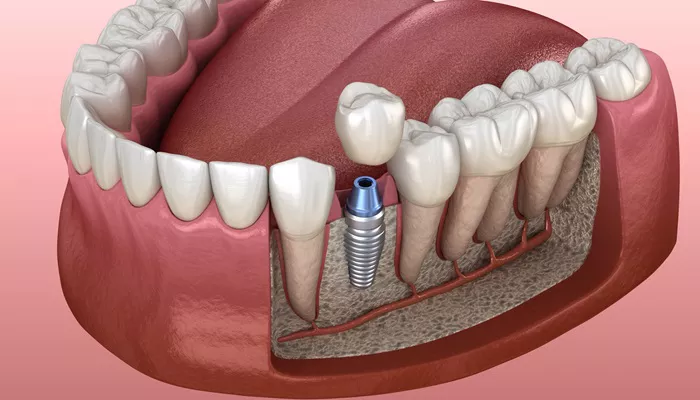Dental implants have revolutionized the way we replace missing teeth, offering a permanent and natural-looking solution.
At the heart of every dental implant is a screw, which serves as the foundation for the artificial tooth. The size of this screw is a critical factor in determining the success and longevity of the implant. In this article, we will delve into the world of dental implant screw sizes and explore why they are so important.
Factors Affecting Implant Screw Size Selection
When selecting the appropriate size for a dental implant screw, several factors must be considered. These include the patient’s jawbone density, the available space in the mouth, and the desired aesthetic outcome. Let’s take a closer look at each of these factors:
Jawbone Density
The density of the patient’s jawbone plays a significant role in determining the ideal screw size. Denser bone can support larger screws, while softer bone may require smaller screws to avoid complications such as fractures or implant failure.
Available Space
The available space in the patient’s mouth is another crucial factor. Implant screws must fit comfortably within the jawbone without interfering with surrounding teeth or nerves. A thorough examination and X-rays are necessary to determine the optimal screw size.
SEE ALSO: How Much Is A Dental Implant in New York
Aesthetic Considerations
The size of the implant screw can also impact the final aesthetic outcome. In cases where the screw is visible, a smaller diameter may be preferred to create a more natural-looking appearance. Conversely, larger screws may be necessary to provide sufficient support for the artificial tooth.
Dimensions of Dental Implant Screws
Dental implant screws come in a variety of sizes to accommodate different clinical situations. The two main dimensions that are considered are the diameter and length of the screw.
1. Diameter
The diameter of a dental implant screw is typically measured in millimeters (mm) and can range from 2mm to 6mm. The most common diameters are:
3.4mm to 5.8mm for regular implants
1.8mm to 3.3mm for mini implants
The choice of diameter depends on the available bone width and the desired aesthetic outcome. Wider screws provide more stability but may not be suitable for all patients.
2. Length
The length of a dental implant screw is also measured in millimeters (mm) and can range from 6mm to 16mm. The most common lengths are:
12mm to 16mm for standard implants
7mm to 8.5mm for short implants
The choice of length depends on the available bone height and the desired level of stability. Longer screws provide more surface area for osseointegration (the process by which the bone fuses with the implant) but may not be suitable for all patients.
Types of Dental Implant Screws
There are several types of dental implant screws, each designed to meet specific clinical needs. These include:
Tapered Screws
Tapered screws feature a conical shape that allows for better stability and load-bearing capacity. They are ideal for immediate loading protocols where immediate function is desired.
Cylindrical Screws
Cylindrical screws have a straight design that ensures secure fixation within the bone. They are often used in cases where primary stability and osseointegration are crucial.
Hexagonal Screws
Hexagonal screws have a hexagon-shaped head that prevents rotation during placement. They are well-suited for multi-unit restorations or complex prosthodontic cases.
Short Vs. Standard Implant Screws
In recent years, there has been a growing interest in the use of short implant screws. These screws, which measure 8.5mm or less in length, offer several advantages over standard implants:
- Shorter healing time
- Reduced risk of complications
- Suitability for patients with limited bone height
A study published in the Journal of Clinical Medicine found that short implants (7mm and 8.5mm) had similar survival rates, stability, and marginal bone level changes compared to standard implants (10mm or longer). This suggests that short implants can be a viable option for many patients.
Choosing The Right Screw Size
Selecting the appropriate size for a dental implant screw is a critical step in the treatment process. It requires a thorough examination of the patient’s oral health, including X-rays and CT scans. The dentist will also consider the patient’s preferences and overall treatment goals.
Once the ideal screw size has been determined, the dentist will proceed with the surgical placement of the implant. This typically involves making an incision in the gum, exposing the underlying bone, and drilling a hole to accommodate the screw. The screw is then inserted into the bone and allowed to heal for several months, during which time osseointegration occurs.
After the implant has fully integrated with the bone, the dentist will attach an abutment (a small connector piece) to the top of the screw.
This abutment serves as the foundation for the artificial tooth, which is then placed on top.
Conclusion
The size of a dental implant screw is a critical factor in determining the success and longevity of the implant. By carefully selecting the appropriate diameter and length based on the patient’s individual needs, dentists can ensure a secure and stable foundation for the artificial tooth. While standard implants have traditionally been the norm, short implants are becoming increasingly popular due to their shorter healing times and reduced risk of complications.
Related topics:

